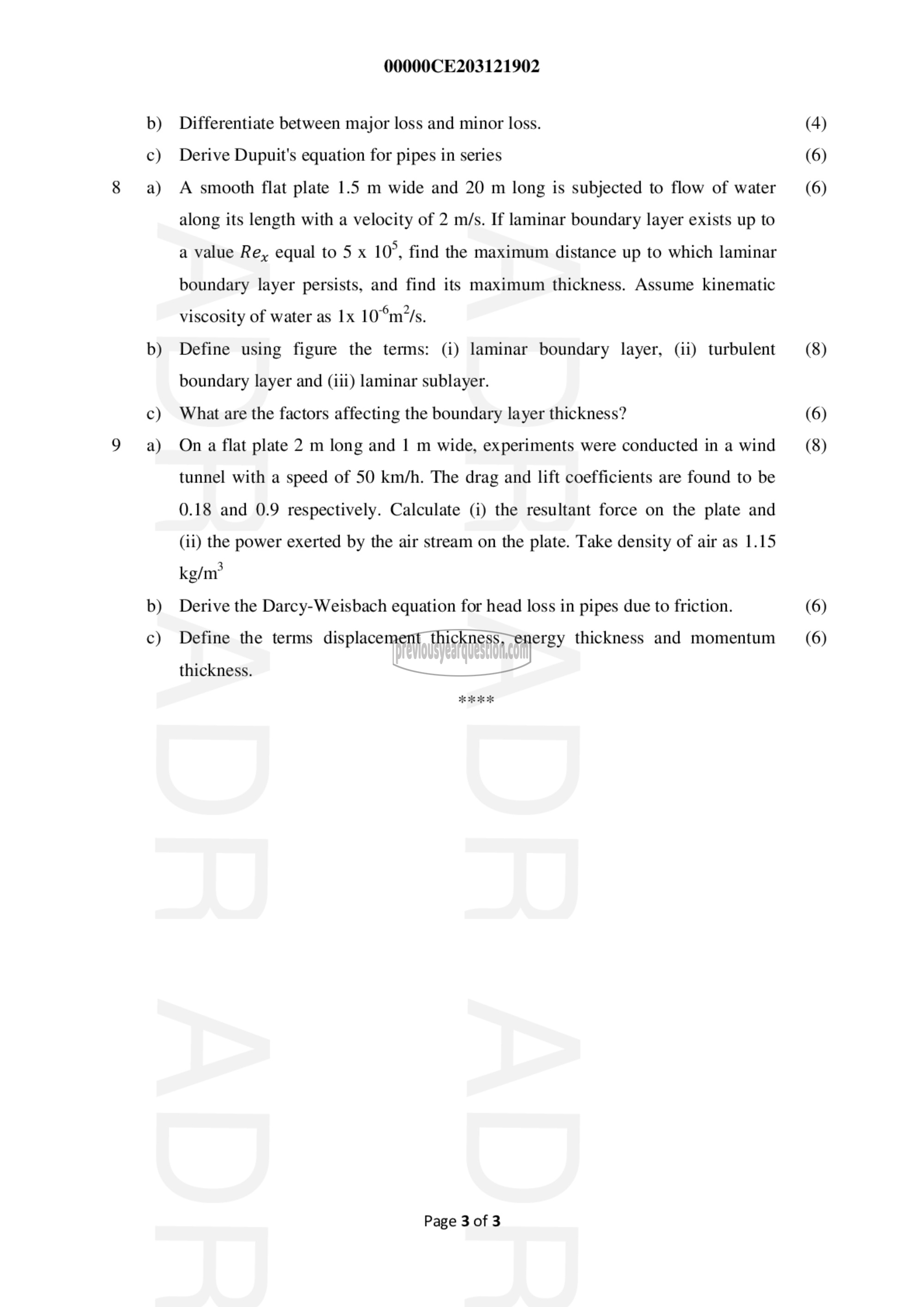APJ ABDUL KALAM TECHNOLOGICAL UNIVERSITY Previous Years Question Paper & Answer
Semester : SEMESTER 3
Subject : Fluid Mechanics– I
Year : 2020
Term : DECEMBER
Branch : CIVIL ENGINEERING
Scheme : 2015 Full Time
Course Code : CE 203
Page:3
b)
0)
೩)
0)
0)
೩)
0)
௦)
00000CE203121902
Differentiate between major loss and minor loss.
Derive Dupuit's equation for pipes in series
A smooth flat plate 1.5 m wide and 20 m long is subjected to flow of water
along its length with a velocity of 2 m/s. If laminar boundary layer exists up to
a value Re, equal to 5 x 10°, find the maximum distance up to which laminar
boundary layer persists, and find its maximum thickness. Assume kinematic
viscosity of water as 1% 10൩ /5.
Define using figure the terms: (i) laminar boundary layer, (ii) turbulent
boundary layer and (iii) laminar sublayer.
What are the factors affecting the boundary layer thickness?
On a flat plate 2 m long and 1 m wide, experiments were conducted in a wind
tunnel with a speed of 50 km/h. The drag and lift coefficients are found to be
0.18 and 0.9 respectively. Calculate (i) the resultant force on the plate and
(ii) the power exerted by the air stream on the plate. Take density of air as 1.15
kg/m?
Derive the Darcy-Weisbach equation for head loss in pipes due to friction.
Define the terms displacement thickness, energy thickness and momentum
thickness.
Page 3 of 3
(4)
(6)
(6)
(8)
(6)
(8)
(6)
(6)
